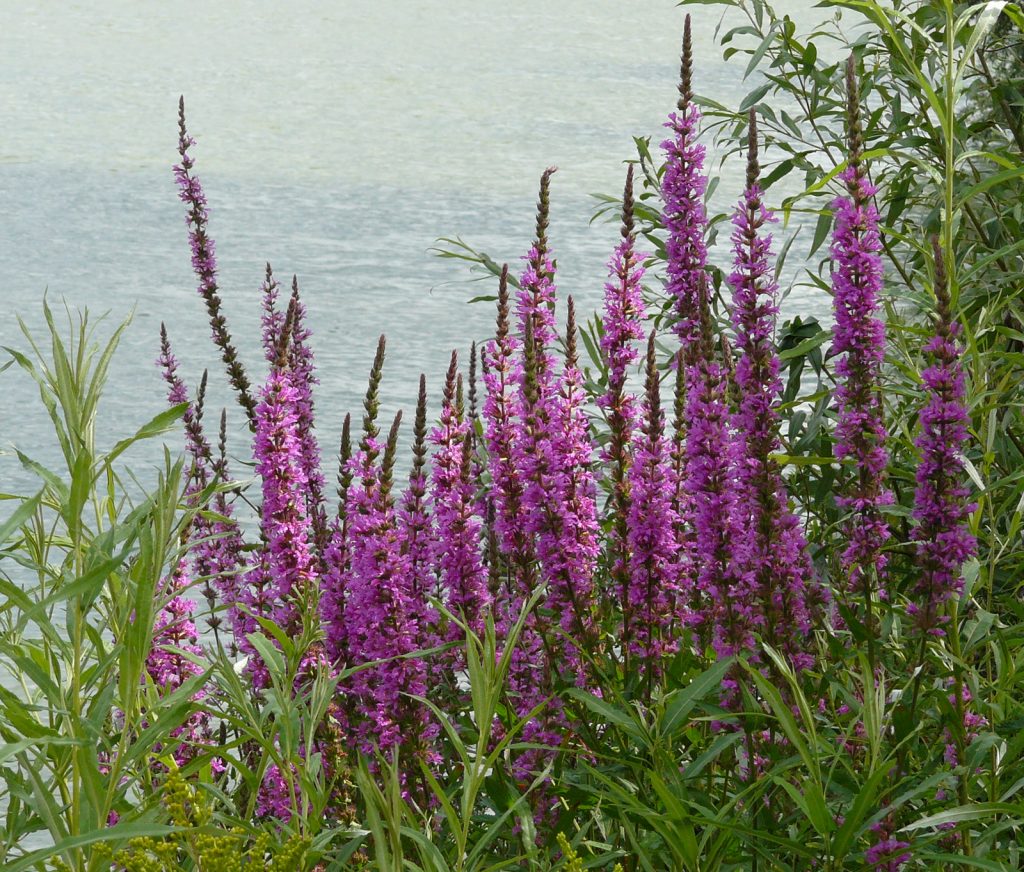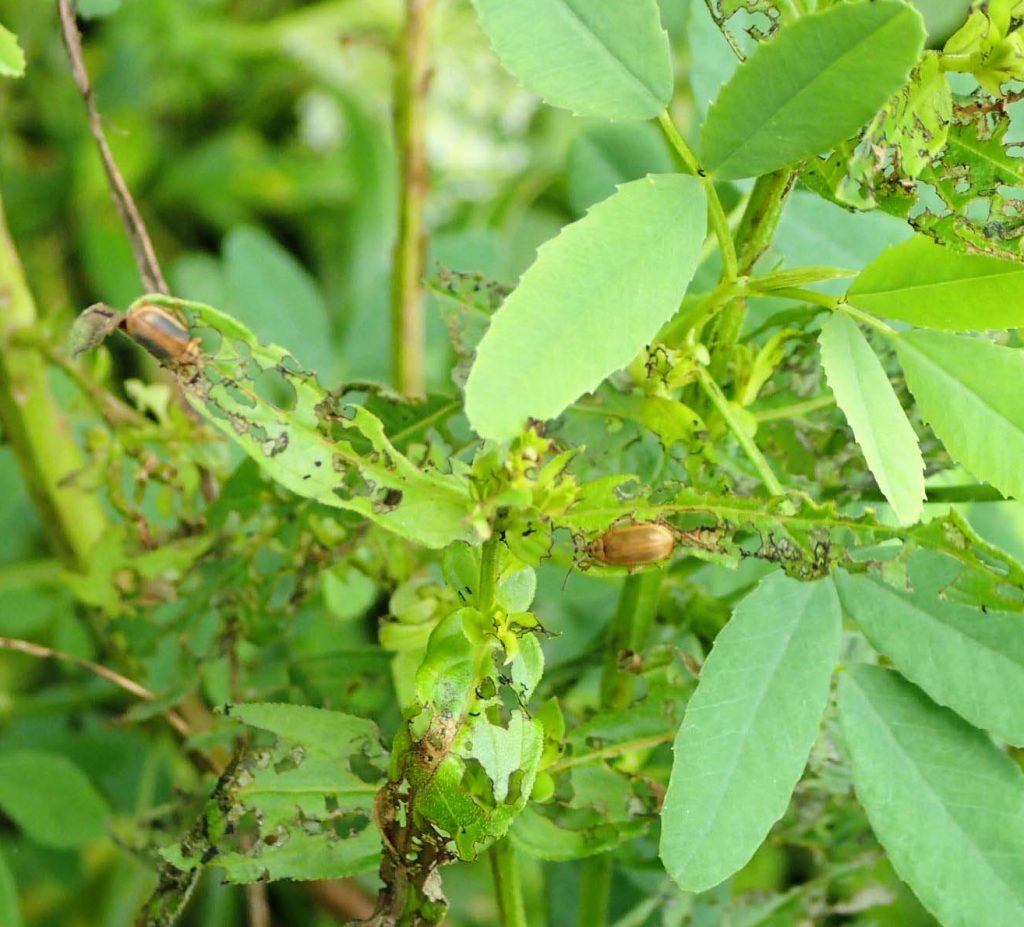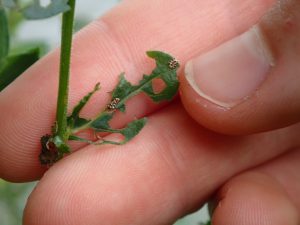By Allene Smith, Land Steward

Purple loosestrife (Lythrum salicaria), an invasive plant. Photo: Wikimedia.
A single purple loosestrife plant can produce roughly 2.5 million seeds. With that staggering number in mind, it is no surprise to hear that it out-competes native vegetation, which affects the food source and nesting habitats of native wetland fowl and other animals. Thus, every purple loosestrife plant brings with it the potential to alter the composition of an entire natural community.
This sounds big, right? It IS big. That’s why when Legacy’s Land Stewardship Manager Dana Wright noticed that there was more purple loosestrife popping up in Reichert Preserve’s wet meadow than she’d seen in past years, she set me on a mission to go collect some of the beetles that might just save the day.
Thanks to our friends over at Ann Arbor Natural Area Preservation (NAP), we knew where to find some. Over a decade ago, NAP initiated a release program for two non-native but trusted leaf-feeding beetles: Galerucella calmariensis (black-margined loosestrife beetle) and Galerucella pusilla (golden loosestrife beetle).

Two loosestrife beetles eating purple loosestrife while ignoring another type of plant.
In extensive field trials, these little beetles had proven themselves to be effective biological control agents for the all-too-common purple loosestrife (Lythrum salicaria). It just so happens that the beetles prefer purple loosestrife over all other native wetland species for food. How convenient!
We found them with ease. The beetles released over a decade ago had given rise to a sustainable population. In most areas of the park, purple loosestrife was present but not overrepresented in relation to the community at large. A balance had been struck. We found eggs; several stages of larval growth; and feeding, breeding adult beetles. By the end of that day, I felt a kinship with these tiny saviors of our wetland and coastal ecosystems.
The next day, we deposited the beetles on purple loosestrife plants at Reichert Preserve. When I revisited those plants the following week, I found the familiar “shot hole” defoliation pattern characteristic of these loosestrife beetles. They’d begun their work.
I’ll be visiting the preserve often this fall, always with an eye toward the loosestrife. It has potential to disrupt, but also potential—with the help of the beetles—to tell a true invasive species success story.

Loosestrife larva. Photo: Wikimedia Commons

Loosestrife beetle eggs.

 RSS Feed
RSS Feed
I have a small natural lake on my property that has an ever increasing amount of purple loosestrife plants invading it. Are the beetles, larva, or eggs, available anywhere? Thank You
Hi Ken,
I don’t know of anywhere you can purchase purple loosestrife beetles, but I would like to make them available. If there is enough interest Legacy will work on hosting a beetle collection event next summer for private landowners like you to collect beetles and take them home.
several years ago I attended a workshop at MSU where we were taught to identify purple loosestrifte and how the Galerucella beetles can keep it under control. We were also able to take home, and release a small quantity of these beetles. These classes are no onger offered and nobody knows of anybody who is still raising the beetles. If you have this collection oppurtunity next year, please contact me thanks
Dana: I just now, (November), saw your answer. I would love to get involved in a project to collect the beetles to help preserve the natural environment of my lake. I also own another piece of property in Jackson County where a very rare, natural flower grows, it’s called a “kitten tail”. I would like to do something to preserve this area too. You can call me at 313-320-9667. Thanks, Ken